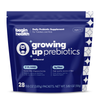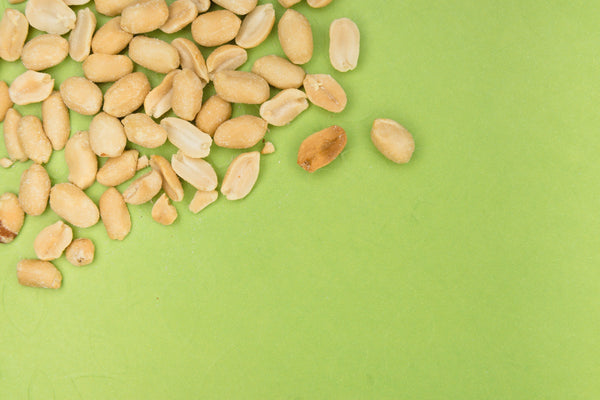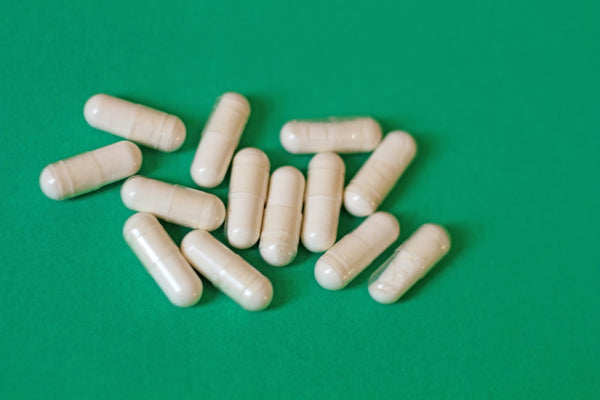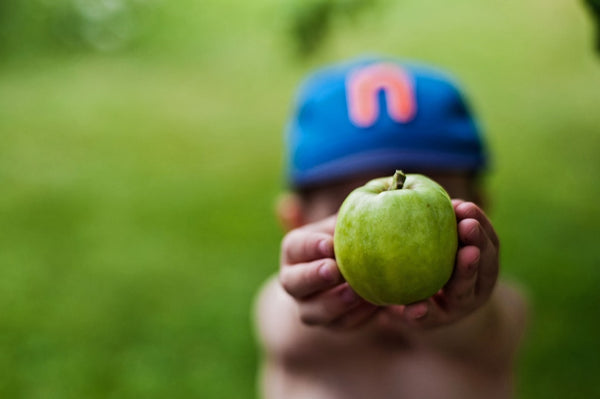Nutrition Support Tips for SIBO in Kids
share this article

In my years of expertise focusing on pediatric gut health, one thing is clear: gut issues don't just bother adults; they can unsettle our little ones, too. SIBO can affect our kid’s gut health and create symptoms such as constipation and digestive discomfort. Let’s review how Small Intestinal Bacterial Overgrowth (SIBO) affects your kid’s gut health and how we can prevent or treat it to help your kiddos build a healthier gut.
SIBO Symptoms in Kids
Small intestinal bacterial overgrowth is the “overgrowth” of bacteria in the small intestine, a place usually marked by fewer bacteria compared to other parts of the gut [1]. If left unchecked, SIBO doesn't just result in chronic diarrhea or constipation; the results can be far more severe. Other symptoms may include:
-
Unintentional weight loss
-
Nutritional deficiencies
-
Food sensitivities
These symptoms may escalate into chronic health issues if left untreated. Behavioral challenges such as ADHD, ASD, anxiety and depression may follow, affecting your kid’s social and academic life [3, 4, 5]. Poor sleep patterns and a general failure to thrive could set your little one back in critical developmental stages.
Daily reads to help your little ones lead happier and healthier lives.
Join the
Happy Gut Club
Diagnosing SIBO In Kids
There are a few different methods to diagnosis SIBO in kids, including:
-
The SIBO Breath Test. This is a noninvasive test that measures the amount of gasses produced by bacteria in the small intestine. The SIBO breath test involves consuming a sugar solution that the bacteria in the small intestine can ferment, producing hydrogen or methane gas. This gas is then measured by blowing into a straw and collecting the breath into a tube. Samples are collected every 20 minutes for up to 3 hours. Having higher levels of these gasses may indicate that a person has SIBO.
-
Stool Testing. Since younger kids will still need to gain the skill to blow into a straw, it is not a viable test for kids under 6. For infants and toddlers, I recommend stool testing. It’s less invasive than the breath test and can be used to detect SIBO by examining the levels of specific bacterial markers in your stool.
Both tests can be ordered by your Functional Doctor, Naturopathic Physician, and some Nutritionist specializing in SIBO.
Additional methods for SIBO testing include intestinal biopsy of the small intestine and serum antibody testing, which requires a blood draw. This method is more invasive and will need to be requested from your family doctor or gastroenterologist.
Nutrition Support Tips for SIBO Symptoms in Kids
How can you reduce your kid’s symptoms? Below are a few nutrition changes to implement now to support your kid’s journey through SIBO and naturally rebuild their gut microbiome.
-
Prebiotic Fiber. Whole fruits and vegetables such as berries and carrots naturally contain sources of prebiotic fiber to boost gut health. For pickier kiddos, add a prebiotic supplement as necessary. Begin Health’s Growing Up Prebiotics is formulated specifically for kids to provide 3g of daily prebiotic fiber from chicory root fiber and human milk oligosaccharides to help boost overall friendly bacteria count in the gut for digestive balance.
-
Replace sugary drinks and processed snacks with a variety of whole-food fruits to reduce added sugar intake. Over-consuming foods with added sugars can help feed the excess bacteria from SIBO.
-
Add Fermented foods. Fermented foods are usually introduced after treatment to rebuild beneficial flora and reduce the recurrence rate. In addition to prebiotic fiber from whole foods, take it up a notch by adding fermented foods to introduce more good gut bacteria into their microbiome. Pairing prebiotic fiber with fermented foods boosts the effectiveness of the natural probiotics found in these foods.
-
Include Kefir. Kefir adds in beneficial bacteria that can replace pathogenic bacteria [6]. By introducing more variety, you’ll also add a diverse mix of beneficial flora (probiotics) into their tummies. The combination of prebiotic fiber and probiotics can help support digestive symptoms such as constipation, diarrhea, and bloating.
Supporting SIBO with Antibacterial Spices and Herbs for Kids
Herbs and spices contain polyphenols, which support a more diverse microbiome that can help reduce SIBO and maintain an environment that helps beneficial bacteria thrive [7,8]. Here are few options that are easy to include into your little one’s diets:
-
Cinnamon, Ginger, and Turmeric. These spices not only jazz up their favorite meals, but studies show they also contain anti-inflammatory and antimicrobial properties that support symptoms of bloating and support a better intestinal environment for better poops [7,8].
-
Oregano. Oregano is a herb that studies have shown can potentially inhibit growth of intestinal microbes. For this reason, it may help treat chronic overgrowth issues, such as SIBO [9]. Oil of oregano is generally used with adults due to its potency. And in the case of kids, oils are not recommended, but sprinkling a pinch or two of the dried herb into your little one’s meals is a great alternative.
-
Peppermint. Peppermint is a natural antispasmodic. It can be taken as a tea, or oil and has many health benefits. In treating SIBO, enteric-coated peppermint oil has proven to inhibit the growth of 22 bacterial strains. Studies show a significant reduction in methane and hydrogen production within an hour of taking peppermint [10]. Peppermint is also effective in relieving bloating, constipation, and abdominal discomfort.
To use peppermint with a kid under 10 years of age, I recommend using a peppermint infusion rather than an oil capsule. To make an infusion, simply add 1 tablespoon of peppermint leaves to every cup of water. Bring water and peppermint to a boil, then turn off the heat and allow the water to cool. Strain the peppermint leaves and store this infusion in the refrigerator. This concentrated infusion can be given to your child a tablespoon at a time before each meal and snack. For kids over 10 years of age (if they can swallow capsules), 1 enteric-coated capsule daily for 6 - 8 weeks would be sufficient.
Summary
Small intestinal bacterial overgrowth is the “overgrowth” of bacteria in the small intestine, a place usually marked by fewer bacteria compared to other parts of the gut, causing digestive distress such as constipation or diarrhea in kids. SIBO can be diagnosed through a SIBO Breath Test or Stool Testing. Natural nutrition remedies and support for SIBO treatment may include the addition of herbs, spices, fermented foods, kefir, and prebiotic fiber - both from foods such as berries and carrots or prebiotic supplements such as Growing Up Prebiotics.















